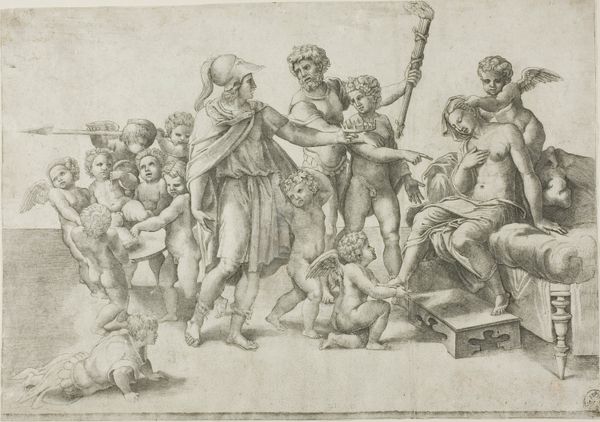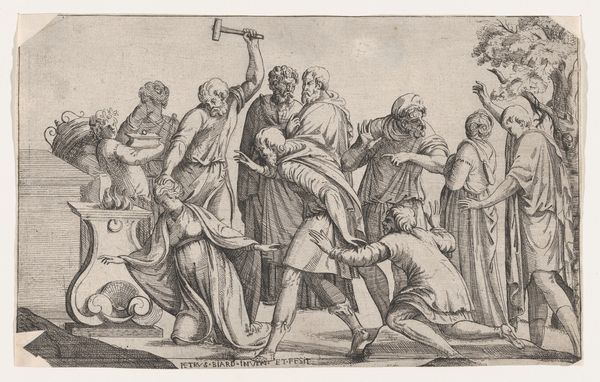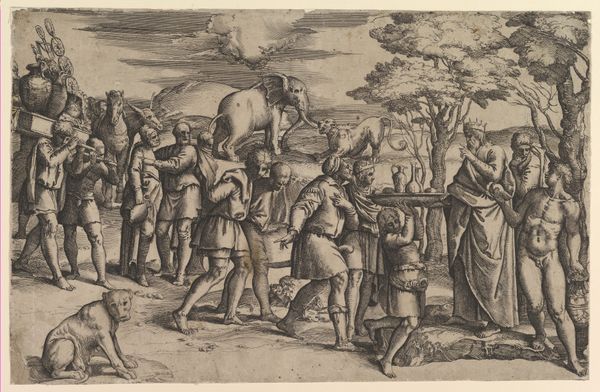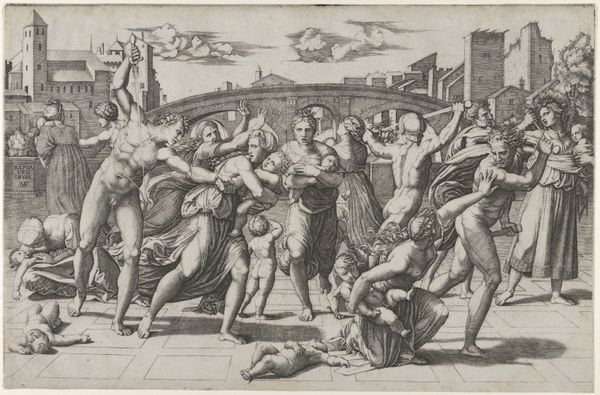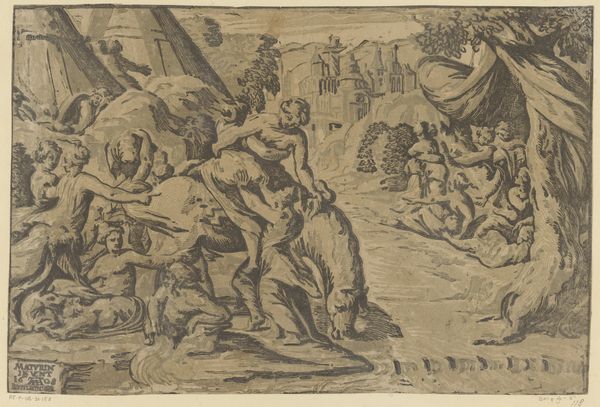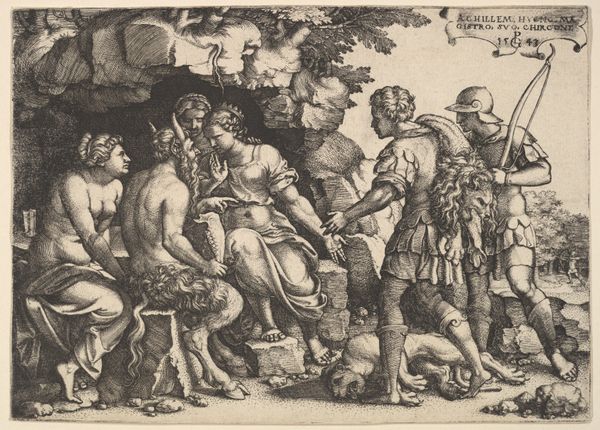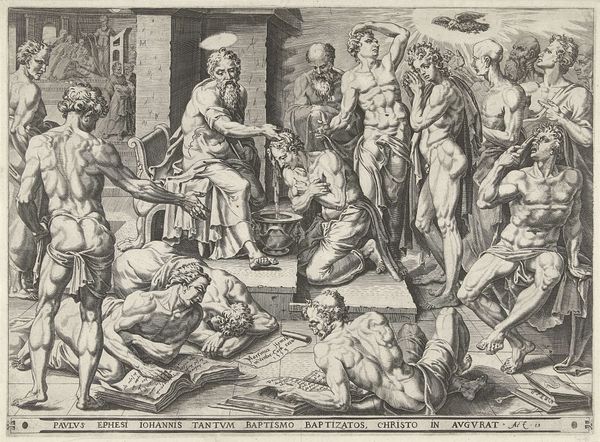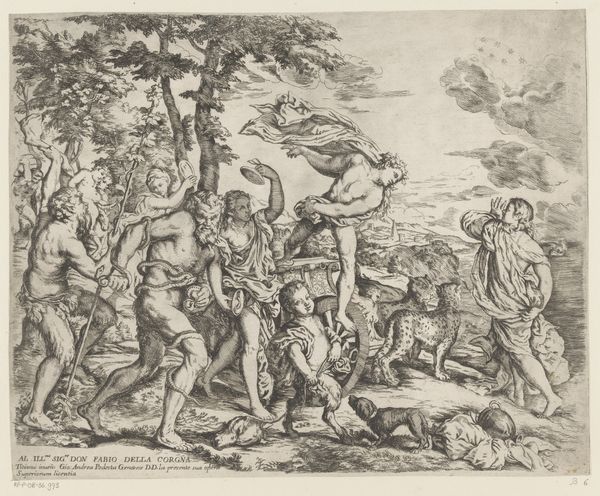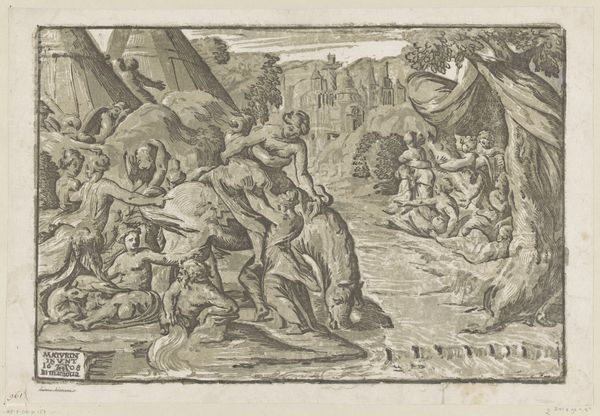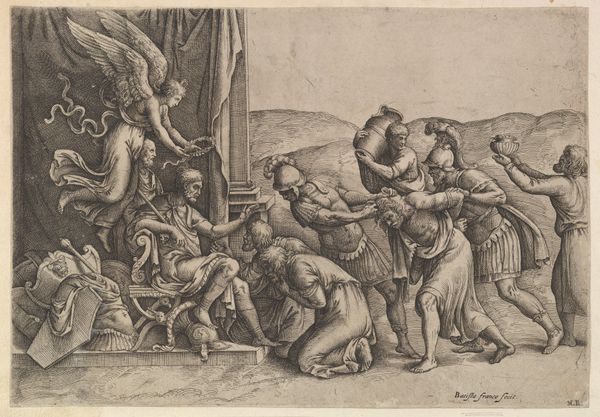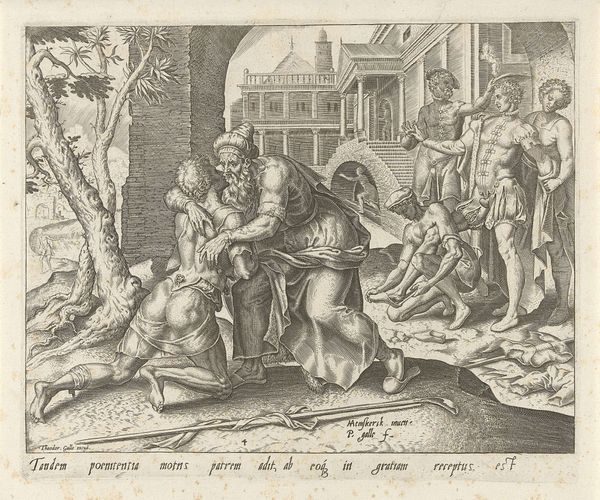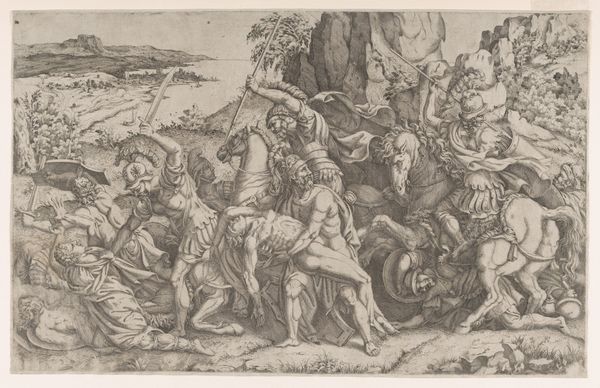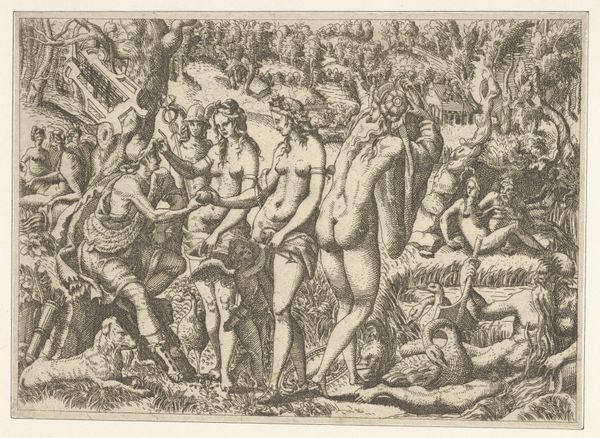
The marriage of Alexander and Roxana; Alexander surrounded by putti, offering a crown to Roxana who is seated at right 1520s - 1530s
0:00
0:00
drawing, print, engraving
#
drawing
#
allegory
#
narrative-art
# print
#
figuration
#
history-painting
#
academic-art
#
italian-renaissance
#
engraving
Dimensions: Sheet: 8 11/16 × 12 5/16 in. (22.1 × 31.2 cm)
Copyright: Public Domain
Editor: This is Giovanni Jacopo Caraglio’s engraving, "The Marriage of Alexander and Roxana," created sometime in the 1520s or 30s. There’s almost a chaotic energy to the scene with all the figures crammed into the space, especially the crowd of putti on the left! What can you tell me about the historical context of this image? Curator: It’s a fascinating piece to consider within the context of the Italian Renaissance and the evolving role of printmaking. Consider that this image, disseminated as a print, played a role in shaping the public's understanding of Alexander the Great and his legacy. It was Raphael who originally designed this scene. How does Caraglio’s work contribute to, or perhaps even alter, Raphael’s original intentions by adapting this composition for print? Editor: I guess turning a painting into a print makes it much more accessible and widespread. The original painting would likely be viewed by a small elite audience, but a print could circulate much further. Curator: Precisely. This accessibility shifts the image's socio-political function. Instead of being a private commission for a wealthy patron, it enters into the public sphere. How does the narrative—Alexander's marriage to Roxana—contribute to Renaissance ideals and power dynamics when viewed in homes or public spaces? Editor: I see. It's not just about depicting a historical event; it’s about what that event represents and how that representation is consumed and understood by the public. It feels almost like propaganda. Curator: Exactly. Consider, too, the role of classical imagery and how artists like Caraglio used them to bolster authority and project a particular image of leadership. How does he achieve this with the bodies, expressions, and relationships between Alexander, Roxana, and all those surrounding figures? Editor: Looking at the composition again, I realize how deliberate the staging seems. It’s not just a snapshot; it’s a carefully constructed image designed to convey a specific message to a broad audience. Thank you, this definitely broadened my view! Curator: My pleasure. By examining the art as a cultural artifact and understanding its intended audiences and socio-political circumstances, we start to decode the rich dialogue it held with its time – and perhaps still does.
Comments
No comments
Be the first to comment and join the conversation on the ultimate creative platform.
